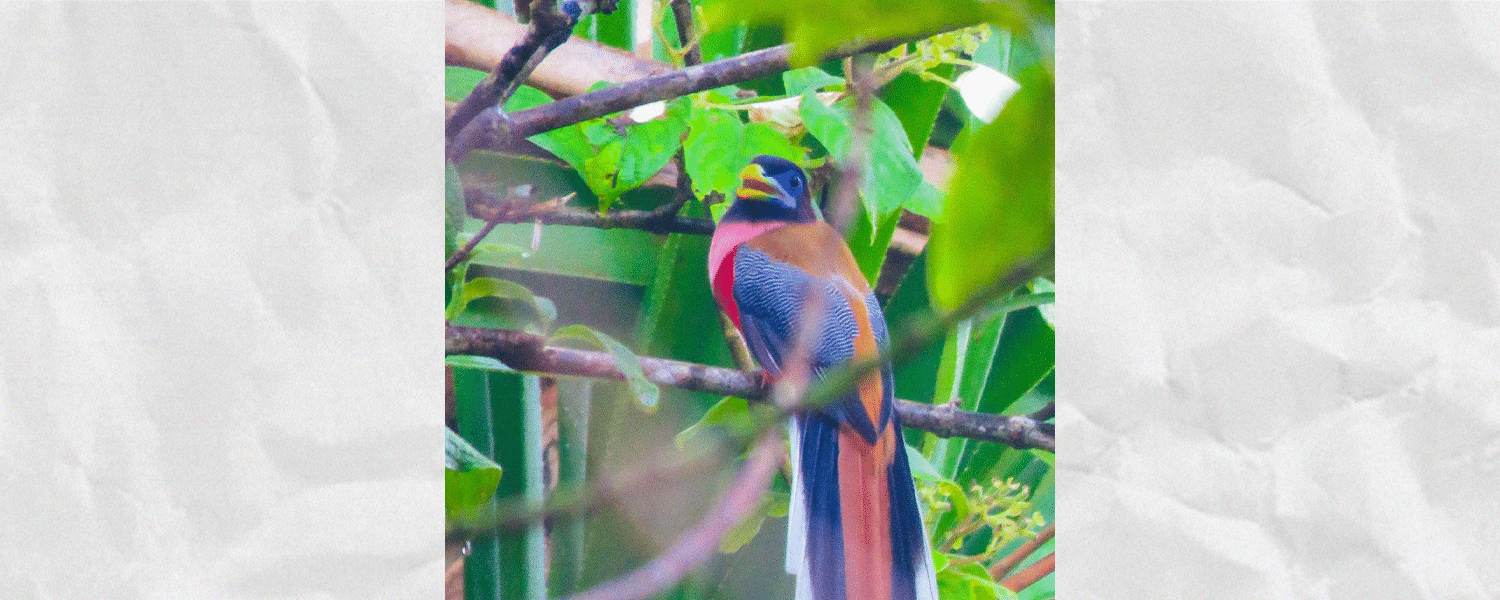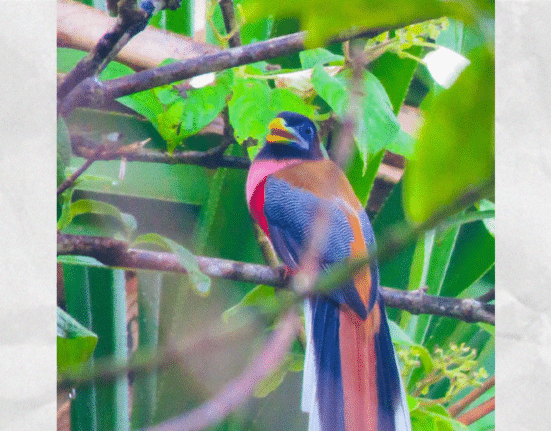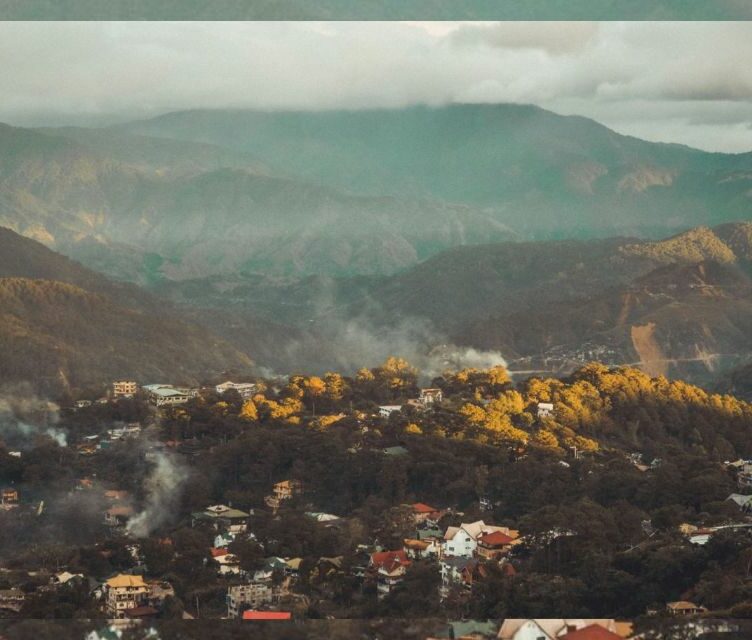HEARING the name “Ibong Adarna” reminds many people of an epic story.
Ibong Adarna is often described as the most colorful bird in Philippine folklore. It is featured in the epic poem many read during their freshman year in high school, titled Korido at Buhay na Pinagdaanan ng Tatlong Prinsipeng Magkakapatid na Anak ni Haring Fernando at ni Reyna Valeriana sa Kahariang Berbanya, or simply known as Ibong Adarna.
The titular legendary bird has healing powers. However, it also has the power to turn any living thing into a stone once its poop lands on them.
But while the Ibong Adarna is fiction, it has been associated with Harpactes ardens, otherwise known as the Philippine Trogon.
Forester Ronelmar Aguilar recently captured a rare sighting of the Philippine Trogon, bringing back memories of the mythical Ibong Adarna.
Aguilar shared his photographs of the long-tailed avian on his Facebook account on July 17, along with the caption, “I’m so lucky to have seen and photographed you in the wild. Pogi!”
Aguilar said he spotted the Philippine Trogon in the area of Energy Development Corporation in Ormoc City in Leyte.
The bird’s plumage — which displays bright colors of blue, pink, red, and yellow — also wowed netizens.
One Facebook user wondered why the Philippine Trogon that Aguilar photographed has bright colors, compared to the one he saw before.
Aguilar replied to the comment, saying that what the netizen might be referring to is the female Philippine Trogon.
The Department of Environment and Natural Resources in the Davao region shared on July 14 photos of the female Philippine Trogon which was spotted in the tropical forest of Mount Apo in Mindanao.
“While the male Philippine Trogon displays bright colors, the female ones possess subdued shades of mustard-yellow underparts and an olive-brown head,” the DENR said on its Facebook post.
About the Philippine Trogon
The Philippine Trogon is part of the family Trogonidae, which is divided into seven genera or groups.
This long-tailed avian is said to be elusive to people. It is usually found in the darker sections of the forest and nests in tree hollows.
It eats insects like grasshoppers, as well as fruits, according to the DENR Davao.
The actual sound of the Philippine Trogon is different from what is narrated in the epic poem, where the Ibong Adarna can lull someone to sleep with its singing.
Birding Adventure Philippines, a full service birding tourism company, said the bird’s call can be likened to a horse’s neigh.
“The call is described in the field guide as a soft nuu nu nu nu nu nu nu nuuu rising and accelerating with the first few notes and then gradually descending and slowing to the end.” it said in an October 2020 Facebook post.
The Philippine Trogon is endemic to the country, and can be found in the lowland forests of Luzon, Catanduanes, Marinduque, Polilo, Bohol, Samar, Leyte, Basilan, and Mindanao, the birding tourism company said.
The DENR Davao has called on the public to help in protecting and preserving this bird species.
How useful was this post?
Click on a star to rate it!
Average rating 0 / 5. Vote count: 0
No votes so far! Be the first to rate this post.
We are sorry that this post was not useful for you!
Let us improve this post!
Tell us how we can improve this post?







